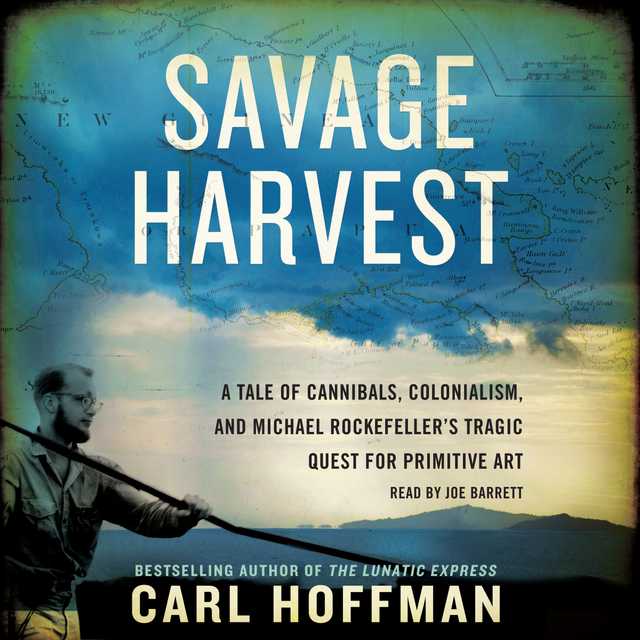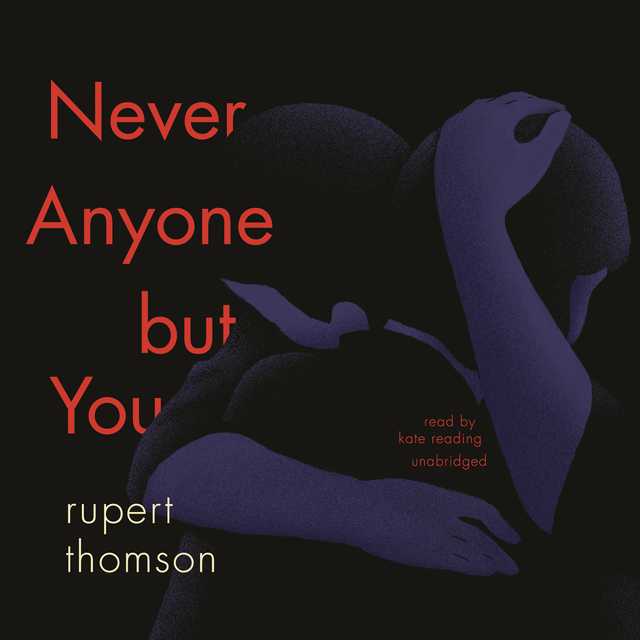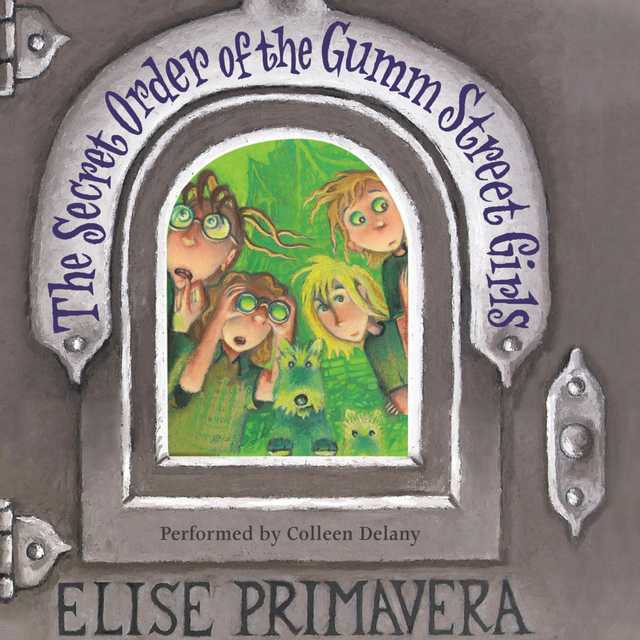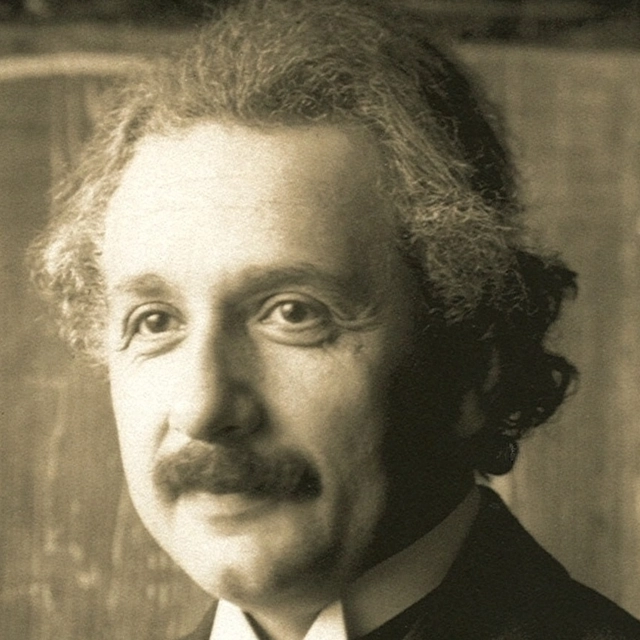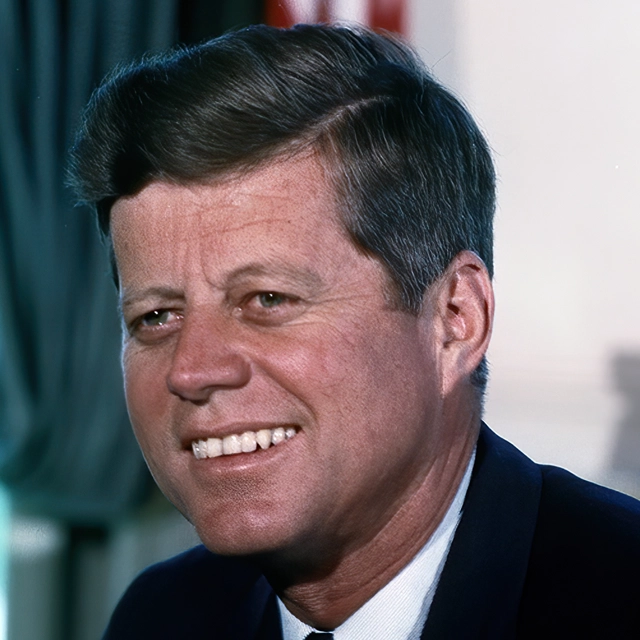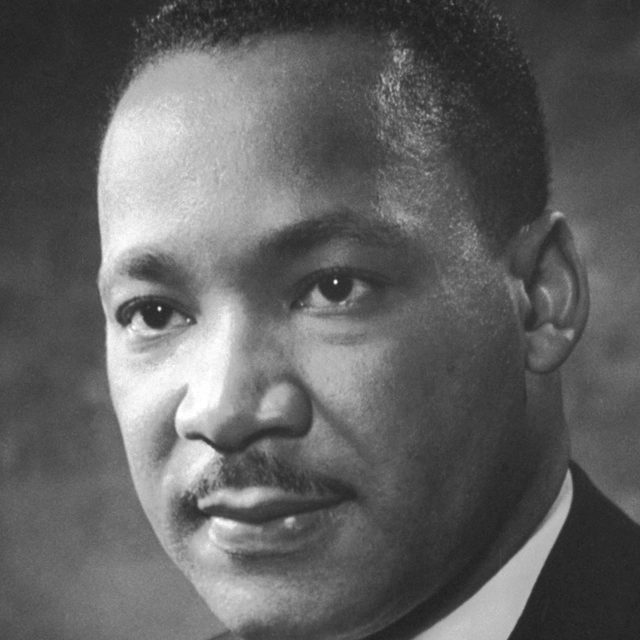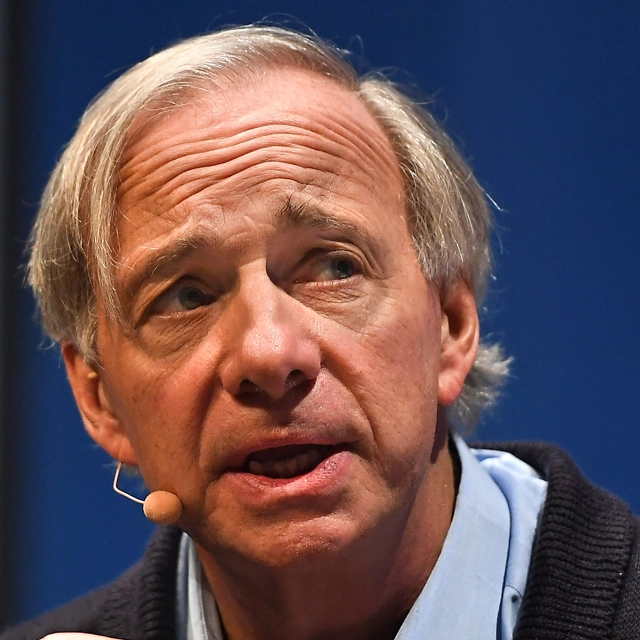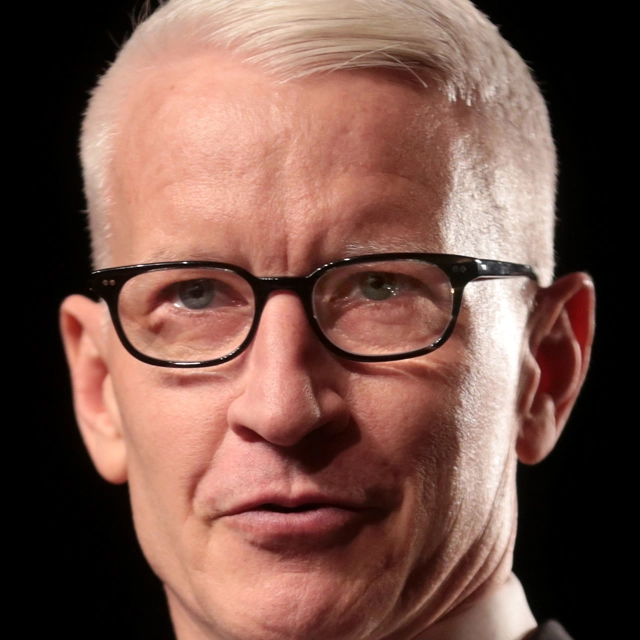Savage Harvest Audiobook Summary
The mysterious disappearance of Michael Rockefeller in New Guinea in 1961 has kept the world and his powerful, influential family guessing for years. Now, Carl Hoffman uncovers startling new evidence that finally tells the full, astonishing story.
Despite exhaustive searches, no trace of Rockefeller was ever found. Soon after his disappearance, rumors surfaced that he’d been killed and ceremonially eaten by the local Asmat–a native tribe of warriors whose complex culture was built around sacred, reciprocal violence, head hunting, and ritual cannibalism. The Dutch government and the Rockefeller family denied the story, and Michael’s death was officially ruled a drowning. Yet doubts lingered. Sensational rumors and stories circulated, fueling speculation and intrigue for decades. The real story has long waited to be told–until now.
Retracing Rockefeller’s steps, award-winning journalist Carl Hoffman traveled to the jungles of New Guinea, immersing himself in a world of headhunters and cannibals, secret spirits and customs, and getting to know generations of Asmat. Through exhaustive archival research, he uncovered never-before-seen original documents and located witnesses willing to speak publically after fifty years.
In Savage Harvest he finally solves this decades-old mystery and illuminates a culture transformed by years of colonial rule, whose people continue to be shaped by ancient customs and lore. Combining history, art, colonialism, adventure, and ethnography, Savage Harvest is a mesmerizing whodunit, and a fascinating portrait of the clash between two civilizations that resulted in the death of one of America’s richest and most powerful scions.
Other Top Audiobooks
Savage Harvest Audiobook Narrator
Joe Barrett is the narrator of Savage Harvest audiobook that was written by Carl Hoffman
Carl Hoffman is the author of the New York Times bestseller Savage Harvest, hailed as a “masterpiece” by Outside and named a New York Times editors’ choice and one of the Washington Post’s 50 notable works of nonfiction for 2014, as well as The Lunatic Express. He is a former contributing editor to National Geographic Traveler and Wired, and has traveled on assignment to eighty countries.
About the Author(s) of Savage Harvest
Carl Hoffman is the author of Savage Harvest
More From the Same
- Author : Carl Hoffman
- The Last Wild Men of Borneo
- Liar’s Circus
- Publisher : HarperAudio
- Abraham
- American Gods [TV Tie-In]
- Dead Ringer
- House of Sand and Fog
- Prey
Savage Harvest Full Details
| Narrator | Joe Barrett |
| Length | 9 hours 18 minutes |
| Author | Carl Hoffman |
| Category | |
| Publisher | HarperAudio |
| Release date | March 18, 2014 |
| ISBN | 9780062319463 |
Subjects
The publisher of the Savage Harvest is HarperAudio. includes the following subjects: The BISAC Subject Code is Australia & Oceania, Travel
Additional info
The publisher of the Savage Harvest is HarperAudio. The imprint is HarperAudio. It is supplied by HarperAudio. The ISBN-13 is 9780062319463.
Global Availability
This book is only available in the United States.
Goodreads Reviews
Jenny
August 04, 2018
This is a fascinating read on so many levels. First is the story of the Rockefeller’s and their wealth along with their commitment to philanthropy and the arts. Second is Michaels journey to acquire artifacts that leads to his demise. Brilliant job by the author to recreate Michael’s journey to try and solve the mystery into Michaels death. Another one sit reads.
Carolyn
October 05, 2019
It was late at night when an Asmat man came to our shelter. He carried a sack and proudly opened it to show us his greatest treasure; a human enemy skull which he claimed to have inherited it from his father. It was in 1996, exactly 15 years to the day since Michael Rockefeller disappeared in the same area which added to the creepy atmosphere. Michael was in the Asmat region to collect wood carvings for the Museum of Primitive Art, which his father, Nelson Rockefeller had opened in New York. The Asmat art work is symbolic of warfare, headhunting and ancestor worship, producing superbly designed shields, canoes, and sculpted figures. The former head hunters and cannibals lived in constant fear of spirits and ghosts were known to have slept with human skulls for pillows to protect them from evil spirits. It was widely believed that Michael drowned during a 6.5 to 10 mile swim. The boat he was on was swept out from a river to open sea and capsized. It was also noted that the Asmat had never killed a white man, although they waged frequent wars between villages, and those killed in battle were beheaded and cannibalized. A huge search found no trace of him and it seemed the mystery would never be solved. The conclusion was death by drowning. Carl Hoffman is an award winning travel journalist. He has travelled on assignment to more than 70 countries for National Geographic, Smithsonian, Outside and many other magazines. This is a terrific book. Hoffman visited the Asmat several times in 2012, learned the Indonesian language in order to communicate. He examined hundreds of pages of documents, letters, telegrams and photos from the time around Michael's disappearance, many of which were not known to exist, especially after so many years. Remarkably he was able to interview a priest and a patrol officer who were still alive 50 years after the event. He also befriended and lived with a sullen tribesman who remembered what led up to the disappearance. Hoffman includes pages of footnotes and bibliography. What his research reveals is a massive coverup by the Dutch government, and the Catholic Church. The Asmat kept secrets, fearing the wrath of their gods, the Christian church and the police and military. Hoffman's description of the region is extremely well done and vividly written.. He describes the difficulty in getting there and how hard it is to journey between settlements. There are no roads, motorized vehicles or even bicycles because the area is so muddy and swampy. This is the largest alluvial swamp in the world. When he met the man who was supposed to be his first guide and asked how many tourists go there, he replied 'Many'......'Maybe 4'. Hoffman describes tramping through deep mud, and in villages it was necessary to use wooden walkways above the marsh, sometimes with broken or missing planks.Paths were often a slippery log placed over the mud. I think it is indisputable that the 50 year old mystery has finally been solved, and people involved in the event named. A remarkable piece of journalism, involving travel to a remote region and little known tribal people, exhausting research, history and the solution to a mystery. Very readable.
Annie
October 10, 2015
"Savage Harvest" is about much more than Michael Rockerfeller's disappearance in 1961. This book is brilliant and contains elements of exploration, self-analyzing, anthropology, and politics.From the beginning I could not put the book down. The book begins with a graphic account of a man being killed and ritually eaten by other men captivates the reader to know more. I was drawn into wanting to know more about the Asmat and how they live in a world profoundly different from the one occupied by a more advanced western civilization. I applaud the author who in this book avoided reducing the Asmat to simple stereotypes such as Savages or Oppressed Victims, or Uncivilized Heathens. Hoffman describes the Asmat and their culture with brutal honesty. And he does so using redolent prose that is often poetic.
Ms.pegasus
June 18, 2014
The official pronouncement was: Missing. Presumed drowned. That's how the general public might remember Michael Rockefeller, who vanished off the coast of Dutch New Guinea on November 19, 1961. Why should we care about an event that happened over 50 years ago? There's a sensational element, of course. Michael was the son of Nelson Rockefeller, the governor of New York. There was also a disturbing element, that there were still places in the latter half of the 20th century that could swallow up a man of such social prominence, an American no less. And finally, there were the disturbing rumors that seemed to surface periodically.Carl Hoffman personalizes that story by examining the aborted potential of a 23 year old who had just discovered his passion, was in the act of growing, and lost the chance for that passion to shape the world around him. An appreciation for art, especially primitive art, wealth, and connections brought Michael Rockefeller to New Guinea as a sound assistant on Robert Gardner's ground-breaking ethnographic film, “Dead Birds.” It's a powerful film depicting the culture of the Dani in highland New Guinea. While there he discovered an aptitude for photography, and his restless mind began to explore new projects with these interests in mind. After working on “Dead Birds,” he turned to the southwestern coast of New Guinea, a network of rivers and mangrove swamps peopled by the Asmat. It was a remote and hostile area thought to be relatively isolated from outside contact. It was exactly what Rockefeller was looking for in his quest for unadulterated primitive art. His collections can be seen today in the Michael Rockefeller wing of the Metropolitan Museum of Art. Then, he vanished.Michael Rockefeller arrived at a pivotal point in time. Theoretical frameworks were shifting; there was a hunger for uncovering universal concepts: Primitive art could be appreciated for its purely aesthetic qualities, and not as merely ethnographic artifacts. There was a sense or urgency to Rockefeller's expedition. The Sepik River area where “Dead Birds” was filmed had already been affected extensively by western civilization. In the Asmat area, the Dutch had established their first official outpost 50 years previously, but the area was still relatively untouched. Warfare accompanied by rituals of cannibalism and head-hunting were still in evidence, contrary to Dutch claims. In 1957 the violence reached unacceptable levels with an event that came to be known as the Sylvester Massacre. Eager to rebuff Indonesia's annexation ambitions, the Dutch accelerated their official presence. Part of their claim to the world audience was that New Guinea had been pacified thanks to Dutch administration, and could be shepherded into self-governance under the same enlightened Dutch tutelage. Their policing action in the wake of the Sylvester Massacre left five people from the village of Otsjanep dead. Hoffman assembles compelling evidence that the subsequent carved memorial poles (bisj poles) that the Otsjanep people carved were among the pieces collected by Rockefeller. Ironically, the extraordinary quality of the pieces reflected the vitality of the cannibalism and head-hunting rituals the Dutch were claiming to have eradicated. It's easy to see how Rockefeller became attracted to these bisj poles. They were monumental, some as high as 20 feet, and carved from a single mangrove tree. The stacked figures (potent representatives of ancestors with the slain man carved at the very top) are mingled with cultural symbols such as the crocodile or a canoe. A three foot extension of lattice-work is carved at the top. It's easy to project our own emotions on to these pieces. The figures are incised in a way that suggests an armature of bone and scar tissue. The bent stance emphasizing the curve of hips and thigh suggest a frozen animation. The frontal positioning, the sightless eyes and the detached demeanor of the gaunt figures seem sullen and defiant. The curvilinear carving forms a rhythmic unity like a chain of beings shackled together, connected from the beginning of time. Hoffman describes in detail the dualistic structure of Asmat beliefs. Male / female; the People / the Other; land / water; living / dead; virility / fertility. He uses this template to create his own duality. This is a story about Hoffman's own desire to connect with the primal world that provoked Rockefeller's passion, as well as a story about Rockefeller. Chapters describing his own travels are interspersed with Rockefeller's experiences 50 years ago. “...[T]he quest becomes the only thing that matters – and the deeper I went into Asmat myself and read Michael's journals the more I understood that, identified with it. Hunting art and chasing a story, they are the same. Rain, heat, cold, danger – out there in the wild everything becomes subordinate to the task, and the closer you get to the treasure the more you're willing to do to get it.” He visits the same villages, and talks to people that are the sons and grandsons of men that Rockefeller met. He interviews people who met Rockefeller, including Fr. Hubertus von Peij who also worked closely with Fr. Cornelius van Kessel who was posted to the Asmat area in 1955. Both men were fluent in Asmat and knowledgeable about the people and their culture. He dispatches a Dutch researcher, Erik Thijssen, to sift through original documents in the Netherlands. He analyzes tide charts, weather reports and rates of boat travel for the evening Rockefeller disappeared. Most important of all, he experiences the people with their fears and secrets embedded in a world both pristine and dark: “The Famborep [River] was barely twenty feet wide, a drowned world of hanging vines and epiphytes and moss-covered mangroves. The dark water mirrored the trees and sky above it as shafts of sunlight streamed through the overgrowth, the river flooding the land as far inland as I could see. Birds called. It was beautiful and ethereal, removed....it looked the same as it had at the dawn of time.” The result is far more than a true-crime story, documenting motive, means and opportunity. In the end, Hoffman finds closure both for himself and for Rockefeller's story. Of Rockefeller he states: “Something had happened here that had roots deep in Asmat culture, and I was starting to see that every day I spent in Asmat the story was coalescing into a touchable narrative. The more I understood about Asmat culture, the more I began to think of the mystery of Michael's disappearance in an Asmat way, as if he were one of those spirits who'd never been pushed on to Safan [the realm of the dead]. The Asmat had closed every loop through their rituals -- and through violence -- but Michael was still floating around out there. Perhaps my journey...[would] lay his spirit to rest once and for all.”Hoffman's conclusions are convincing, but what connects with the reader most intimately is the warmth he experiences as the Asmat welcome him back to their village during his second visit. “The Asmat are the strangest people I've ever seen, their secrets deep, their cultural boundaries seemingly rigid. But they are men, and I saw those elemental human feelings in every one of them, feelings that were the stuff of literature and poetry, not logic and reason.”NOTES:A map is essential to understanding the locations and distances traversed in this book. These are two sites that I found useful.http://www.asmat.de//download/artikel...http://www.indonesiatraveling.com/ima...The M.A. Thesis of Lee Dobratz, “The Changing Asmat World, A survey of Cultural and Artistic Change from 1950-2001,” also includes a map, and more important, photos of a wide assortment of bisj poles. Jump to the end of the paper and scroll back to the photo section. Not only are the photos dated, but they can be enlarged to capture a sense of the details of the carvings. http://www.papuaweb.org/dlib/s123/dob... I read SAVAGE HARVEST on the Kindle, and, inexplicably, the end notes are NOT marked out in the text. The only way to connect the notes with the text is to read each of the notes, and then search for some key word in order to jump back to the antecedent text. In choosing to intercut narrative from the present and from the past, a certain amount of chronology and clarity is lost. The decision enhances the dramatic impact of the story. However, the wealth of place names and personal names can get confusing. In addition there is a numerical inconsistency. On the ill-fated trip to Wagin, 5 men from Otsjanep are killed: Dombai, Su, Kokai, Wawar, and Pakai. (Location 1046). Pip escapes and returns to Otsjanep to report what happened. However, later, Hoffman states that after Wagin, Faniptas gave one of his daughters to Dombai and that Faniptas and his men had murdered 6 from Otsjanep (Location 3760). Moreover, the name 'Dombai' obviously refers to more than one person. Another confusing discrepancy is that the men killed in the Lapré raid are identified as: Faratsjam, Osom,, Akon, Samut and Ipi (Loc. 1734). Later, however, he identifies the dead as: Foretsjbai (kepala perang of Kajerpis), Osom (kepala perang of Otsjanep), Akon (kepala perang of Bakyer), and Samut (kepala perang of Jisar), and Ipi (mentioned in the notes as a woman). (Loc. 3805). The reader is left to infer that Faratsjam is the same person as Foretsjbai.This link goes to a summarizing article in Smithsonian Magazine: http://www.smithsonianmag.com/history...Thanks, Will Byrnes!
Ed
February 24, 2015
Michael Rockefeller, 23 years old and a recent Harvard grad was New York royalty in 1961. Michael's great grandfather John D. Rockefeller was at one time the richest man in the US and his grandson, Michael's father Nelson, was Governor of New York. It was initially reported that Michael had drowned off the coast of New Guinea while attempting to source primitive art for his families' museum in Manhattan. Rumor had it that Michael actually made it to shore only to be murdered and eaten by the Azmat, a primitive tribe of headhunting cannibals. Carl Hoffman in this exhaustively researched book presents definitive evidence of the crime by actually learning the language of the Azmat and living with and interviewing the tribe for an extended period to find the truth. The Azmat elderly survivors were understandably scared of having their crime uncovered even over 50 years after the event.I was admittedly more interested in the cover up than Hoffman's anthropological study of the Azmat. The cover up about the true cause of Michael's death by the Rockefeller family, the Catholic Church and the Dutch government added complex dimensions to the story. All had reasons to stonewall; the grieving Rockefeller family wanted fast closure with an easily explainable story, the Catholic Church via it's missionaries wanted to deflect blame away from the Azmat, their recent converts and the Dutch government for geopolitical reasons. The Rockefeller fortune indirectly fueled the sanitized drowning story for over 50 years until this book revealed the evidence of Michael's gruesome murder. The history of the Azmat during the Japanese occupation during World War 2 and Dutch colonial period are also discussed in detail by Hoffman. Michael Rockefeller could have pursued any much safer activity he wanted but with the courage of youth, he accepted the awesome challenge of sourcing primitive art for his families Manhattan collection in one of the most dangerous places in the world and ultimately I think, to impress his father Nelson. I greatly admire his guts and determination. His too short, heroic life deserves the truth be told about his untimely murder and for that reason alone, I thank Carl Hoffman for this masterpiece in investigative journalism.
Andie
April 07, 2014
I was in Junior High when the disappearance of Michael Rockefeller on an expedition for primitive art in New Guinea splashed all over the national media. One night at dinner my dad, who had been stationed there during World War II said, "I bet the headhunters ate him." We all laughed & my mom swatted him with a dish cloth because it was so ridiculous. Such things did not happen in 1961. However, that apparently is exactly what did happen as Carl Hoffman describes in detail in this extraordinary book.In 1961, Michael Rockefeller, the 23-year-old son of Nelson Rockefeller (then Governor of New York) and freshly graduated from Harvard launched an expedition to Dutch New Guinea to collect primitive art for his father's new museum. He had been there several months earlier on a Harvard Peabody Expedition that included the noted writer Peter Matthiessen, but this time he was basically on his own. As the child of extreme privilege, Rockefeller was used to everything pretty much going his way, but on this trip he, unfortunately learned otherwise.In 1961 the area where Rockefeller was searching for artifacts was a dangerous place. Although, the Dutch put out the story for their own political reasons that headhunting and cannibalism had ended in the southern Asmat region of the country, nothing could have been further from the truth. All during the 1950's the region had been the scene of bloody internecine warfare among the Asmat with each killing leading to revenge killings in a cycle that seemingly could not be unbroken. Rockefeller, who did not speak the language proceeded with a hubris that would lead to his grisly downfall.On November 19, 1961 he and Dutch anthropologist Renee Wasing, along with two young Asmat guides set out on an expedition to collect primitive art, moat especially the ceremonial bisj poles. They soon ran into trouble in rough seas and their catamaran capsized. The young guides went for help, but Rockefeller grew impatient & after several hours decided to swing to shore himself in defiance of every known precept of how to survive a shipwreck. Unbelievably he survived the 14-hour, 10-mile swim to shore, but once there was met by a group of Asmat warriors looking to avenge killings in their village several years before, who took their opportunity. The young guides, had, of course made it to shore, and notified the Dutch authorities who, given the importance of the man on board, launched a full-scale military rescue mission. Rene Wassing was quickly found, but Michael Rockefeller seemed to have disappeared into thin airNow the Dutch government's worst nightmare began. They had to notify Rockefeller's family and given the fact that they were petitioning the United Nations to hold onto their colony, they also had to cover-up the more unsavory aspects of the native population. Already rumors were swirling about that Rockefeller fils had been killed and eaten by the Asmat. The Dutch had to suppress these rumors at all costs. Nelson Rockefeller and Michael's twin sister, Mary arrived in New Guinea several days later accompanied by an entourage of press and political aides. The Dutch government officials told them a probable story about an exhaustive search reaching the conclusion that Michael had died by drowning. This story was accepted by the Rockefeller family and they returned to the United States full of praise and thanks to the Dutch officials for all their help in trying to find Michael.Flash forward fifty years and the author, a self-professed outsider who has made his living writing about adventure is now pursuing the story. He travels to New Guinea (now part of Indonesia), immerses himself in the Asmat culture and does exhaustive work in the Dutch colonial archives to arrive at the story of what really happened. What he finds is incredible documentary proof that Rockefeller was, indeed, killed, beheaded, butchered and eaten by a group of Asmat warriors on that fateful day. These facts were specifically covered-up by the Dutch Colonial officials to further their own political ends. The Asmat, however, are not so willing to give up their secrets. Although he comes very close, no one will admit to him directly what happened on that fateful morning. But that detail hardly matters. The story is all there: the clash of the last vestiges of a prehistoric people meeting the modern world so sure of themselves and their superior culture. This is a cautionary tale.
Philip
April 07, 2018
This book fits neatly onto the same bookshelf as Robert Lyman's Among the Headhunters: An Extraordinary World War II Story of Survival in the Burmese Jungle and Mitchell Zuckoff's Lost in Shangri-la, with the added bonus of a genuine unsolved mystery. Plus, it provided endless backstory to the Michael Rockefeller permanent exhibit at the Met, which I remember visiting not long after it opened in the early 80's.I'm usually leery whenever a book (or TV documentary) promises "new evidence that finally tells the full, astonishing story," and despite some of the press blurbs, Hoffman here does NOT in fact solve the mystery of Rockefeller's disappearance, although he ultimately presents a very compelling scenario. I also agree with some other reviewers that the book was overly long, and more than a bit confusing in it's bouncing back and forth between mid-20th Century Asmat history, Rockefeller's own time in Papua (ca 1960), and the present day, (a problem I also had with Lyman's Among the Headhunters). But once I got everything and everyone (see below) straightened out, this was a truly compelling story. Whenever I listen to a book like this, I like to get the print copy as well, so that I can check out any photos (not enough here) and actually see the exotic names spelled out. This was particularly useful with this book, since its based around the competing villages of Omadesep and Otsjanep; deals with mythology based around Biwiripitsj and Desoipitsj; has Dutch cop Anton van der Wouw working with Dutch priest Wim van der Waal; and is constantly bouncing back and forth between Asmat (both a tribe and a region), Agats (a city); Amates (a guy); Atsj and Ajam (Asmat villages), the Asawets River, and a lot of other things that all begin with "A".EXTRA BONUS POINTS: I also have to thank Hoffman for showing me that the Indonesian carving in my basement that I always thought was an Asmat shield is in fact a very large sago serving platter, (will attach a photo if I ever figure out how...). Who knew?NEXT UP: Also just found out that our library has Hoffman's latest book, The Last Wild Men of Borneo: A True Story of Death and Treasure, which looks really interesting as well. However, I think I'm all headhunter'ed out for the moment, so will save this for my 2019 "to read" list.
Jan C
December 20, 2014
What happened to Michael Rockefeller and why? A big story in 1961 was the disappearance of Nelson Rockefeller's son, Michael. After college, he wanted to do something on his own to make his father proud. Nelson had recently opened a Primitive Art Museum (from the book it sounds as though it has been absorbed into the Museum of Modern Art) and Michael had been placed on the Board. He heads off to New Guinea (not directly, the book goes into detail) and he is returning to a particularly savage area when his catamaran flips over in rough water. He elects to swim ashore while his partner stays with the craft. The book posits that he was cannibalized (this is the opening of the book!) but he could have just drowned. The author believes the Rockefellers accepted the drowning theory. That's the explanation the government preferred. Big surprise. I found it interesting how the author kept returning to this same area, asking the same questions. Finally, for his last trip he actually learned some Indonesian so that he could talk to people without having to rely on an interpreter. You'd think this would have occurred to him before his (at least) third trip. This time he also decided to immerse himself in their culture and lived with a family for a month.Why was he killed (if he was)? He came from big money. He may well have believed he could buy anything. He may have bought the wrong thing - from another society where the rules and mores are different. He bought sacrificial poles, masks, etc. They ascribed spiritual vales to these things. It reminded me how native Americans from the 19th and early 20th centuries often felt that people taking their photographs were stealing their spirits. I found this book fascinating.
Carmen
May 21, 2014
I just plowed through this book. It was an incredible page turner. I learned a lot about the history of New Guinea, an area that I knew nearly nothing about. Four stars because I was left with more questions than answers. What happened to the ladies? Carl Hoffman wrote nearly nothing about the women in the Asmat tribe, while giving us an incredibly detailed picture of the life of the men and their incredible spiritual world. I wish there were more pictures. Apparently Michael Rockefeller took many pictures of life on the island and I would've liked to seen more (and a better map). I had to look up pictures of the Bisj poles and shields on Google images and they were mind blowing. I get how collectors were going crazy to get their hands on them. The portrait of Western hubris was so complete and distasteful, I was rooting for the Asmat in the end. I was also delighted by the portraits of Van Kassel and Von Peij, the sympathetic priests. This book was educational and fascinating and I absolutely recommend it.
Esil
March 31, 2014
I won this book from Goodreads. This is not a book I would normally choose to read. Mostly because it's non fiction, but also because it's not a story that on its face seemed particularly compelling. But I entered the giveaway on a last minute whim, won the book and was happily surprised. The first three quarters were interesting -- providing historical background to a part of the world I know very little about. But the last quarter was particularly interesting and compelling as it got into the author's attempt to really live there, get to know the people and figure out what happened. It's hard to imagine how someone can paint a sympathetic picture of cannibalism, but somehow Hoffman pulls it off. He gives depth to the people and their history without being condescending.
Schuyler
April 03, 2015
When I read the first ten pages of Carl Hoffman’s epic tale of Michael Rockefeller and his 1961 New Guinea explorations, I wondered where the author was taking it. It appeared that he had answered the question of what happened to the young adventurer and there was no need to read further. I was wrong.The author was setting the stage for what has been a perplexing riddle about Rockefeller’s disappearance. Did he drown after setting out on a desperate swim to escape a watery grave? Or did he survive the 10-mile swim only to be captured, murdered, and subsequently eaten by savages. Hoffman has attempted, through exhaustive research, interviews of witnesses, and four months living among the natives who allegedly were responsible, to piece together the actual events.The book jacket says Hoffman “finally tells the full, astonishing story.” I don’t get that impression. The author has investigated and pieced together a scenario that, at best, can be labeled probable. It is not definitive and, indeed, has been rejected by the Rockefeller family as not viable and the cause of Michael’s death has been formally labeled as “drowning.”The Asmat, a tribe of warriors with an inscrutable culture of violence, cannibalism, and headhunting, has only recently been declared as free of those traditions. However, members remain secretive and elusive about past occurrences and admit to giving answers that are evasive. They make things up while maintaining absolute secrecy about actual events. There is no malice intended. Rather their intention is to get along with the questioner. Even Hoffman has not been able to turn up any solid facts one way or another, which leads to his best guess as to the actual events.The inability of Hoffman to produce evidence beyond any reasonable doubt could be considered a flaw in his book. I believe that this failure has been remarkably well handled by Hoffman and he expects the reader to examine the gleaned information and form an opinion as to its veracity, much the same as a jury would when deliberating a trial. What is interesting to me is the total conviction that Asmat hold regarding their culture, practices, taboos, and spiritual beliefs. They are what they are and they have no interest in or reason to change. The pressure to change their ways comes from others who don’t share their devotion to a way of life.Hoffman does an excellent job of presenting this culture gap. There is a certain indifference to other ideas by the Asmat, an innocence that is refreshing. Their life is hard by our standards, but perfectly acceptable to them, even Elysian. So, when the tribesmen who know the most about Michael Rockefeller sense a dislike for what was a perfectly normal in their culture, they dodge the issue and insert or omit information more in line with what they sense is acceptable to the outside world, a trait initially developed to get along with strait-laced missionaries.This is a good book that is sometimes perplexing with its many characters with confusing names that have varied relationships and degrees of involvement. It needs to be read carefully, keeping in mind the difference between our cultures. You probably won’t like some of the gorier details about how the Asmat live, how they think, and some of their traditional practices. But hopefully you will come to appreciate their innocent adherence to principle and tradition.
Frequently asked questions
Listening to audiobooks not only easy, it is also very convenient. You can listen to audiobooks on almost every device. From your laptop to your smart phone or even a smart speaker like Apple HomePod or even Alexa. Here’s how you can get started listening to audiobooks.
- 1. Download your favorite audiobook app such as Speechify.
- 2. Sign up for an account.
- 3. Browse the library for the best audiobooks and select the first one for free
- 4. Download the audiobook file to your device
- 5. Open the Speechify audiobook app and select the audiobook you want to listen to.
- 6. Adjust the playback speed and other settings to your preference.
- 7. Press play and enjoy!
While you can listen to the bestsellers on almost any device, and preferences may vary, generally smart phones are offer the most convenience factor. You could be working out, grocery shopping, or even watching your dog in the dog park on a Saturday morning.
However, most audiobook apps work across multiple devices so you can pick up that riveting new Stephen King book you started at the dog park, back on your laptop when you get back home.
Speechify is one of the best apps for audiobooks. The pricing structure is the most competitive in the market and the app is easy to use. It features the best sellers and award winning authors. Listen to your favorite books or discover new ones and listen to real voice actors read to you. Getting started is easy, the first book is free.
Research showcasing the brain health benefits of reading on a regular basis is wide-ranging and undeniable. However, research comparing the benefits of reading vs listening is much more sparse. According to professor of psychology and author Dr. Kristen Willeumier, though, there is good reason to believe that the reading experience provided by audiobooks offers many of the same brain benefits as reading a physical book.
Audiobooks are recordings of books that are read aloud by a professional voice actor. The recordings are typically available for purchase and download in digital formats such as MP3, WMA, or AAC. They can also be streamed from online services like Speechify, Audible, AppleBooks, or Spotify.
You simply download the app onto your smart phone, create your account, and in Speechify, you can choose your first book, from our vast library of best-sellers and classics, to read for free.
Audiobooks, like real books can add up over time. Here’s where you can listen to audiobooks for free. Speechify let’s you read your first best seller for free. Apart from that, we have a vast selection of free audiobooks that you can enjoy. Get the same rich experience no matter if the book was free or not.
It depends. Yes, there are free audiobooks and paid audiobooks. Speechify offers a blend of both!
It varies. The easiest way depends on a few things. The app and service you use, which device, and platform. Speechify is the easiest way to listen to audiobooks. Downloading the app is quick. It is not a large app and does not eat up space on your iPhone or Android device.
Listening to audiobooks on your smart phone, with Speechify, is the easiest way to listen to audiobooks.

